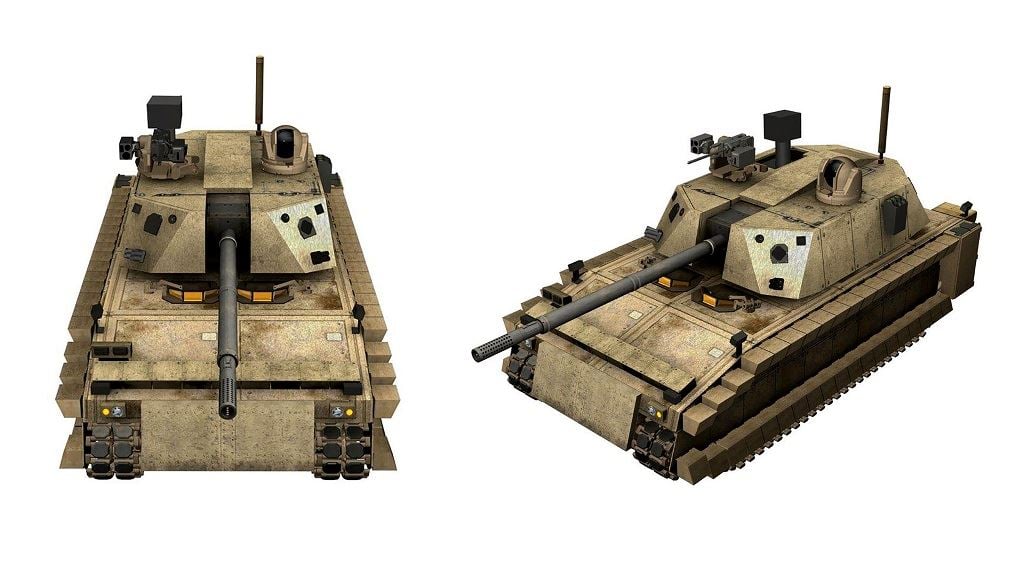![Next-Generation Vehicle Platforms [Image: US Army]](https://fabbaloo.com/wp-content/uploads/2020/05/army1_img_5eb0941bd7b05.jpg)
3D Systems and the US Army are joining forces for an ambitious metal 3D printing project.
Superlatives of any kind are iffy in the 3D printing industry, but this $15 million contract is officially targeted at work “to create the world’s largest, fastest, most precise metal 3D printer.” That’s a lot of superlatives to tackle at one time.
Many large-format 3D printers aren’t especially precise, as they’re built for speed — which ticks two boxes — more than accuracy. Still, most of the time when we’re thinking large-format, we’re thinking of extrusion-based systems, where larger-diameter nozzles lay down thicker layers, leading to that less-precise print result. That won’t be the technology at play with this new system, as it will be a powder bed process, with any further process specifics not yet detailed.
What has been announced is the anticipated build volume, which at 1000 x 1000 x 600 mm is large indeed — easily at least among the largest on the market now. The plan also calls for a minimum wall thickness of 100µm and layer thickness of 30µm.
The work springs from a contract between the Combat Capabilities Development Command Army Research Laboratory (ARL) and 3D Systems, which together with the National Center for Manufacturing Sciences (NCMS) signed the contract with ARL and the Advanced Manufacturing, Materials, and Processes (AMMP) Program. Well, that certainly sounds governmental: AM with 3DS, the ARL, NCMS, and AMMP.
3D Printing In The Military
The US Army has been working with 3D printing for more than 20 years, and has only been upping its investment in recent years.
Many think first of weaponry — which does sound like it’s in sight to at least some extent in this project — when thinking of military applications, but coffee cups, vehicles, spare parts made on-site, and even life-saving medical tools have seen use for 3D printing to great effect in the field. Particular interesting for the armed forces is the prospect of shortening the supply chain, especially with in-the-field deployment of machines that can print replacement parts or specialty tools as needed when troops are far from convenient restocking depots.
And that’s what is in focus here: supply chains for long-range munitions, combat vehicles, helicopters, and air and missile defense.
The goal for the new system is to get usable, durable parts into the field more efficiently and quickly, and with less material usage, than current manufacturing options.
3D Systems In Defense
For its part, 3D Systems also has an established history with the military, including work with the US Marine Corps. The contract with ARL is building on any earlier work, though, as it leverages not only 3D Systems’ existing portfolio but the expertise upon which it was built in order to develop this new metal 3D printer.
Initial use will be in the Army’s depots and labs, and is then planned to expand to “leading aerospace and defense suppliers,” keeping wider availability in sight for what could be a very advanced system.
Based on the existing 3D Systems portfolio and a comment from the announcement, it seems clear the large new system will be a powder bed laser process.
“Up until now, powder bed laser 3D printers have been too small, too slow, and too imprecise to produce major ground combat subsystems at scale,” said Dr. Joseph South, ARL’s program manager for Science of Additive Manufacturing for Next Generation Munitions.
The company’s existing DMP (Direct Metal Printing) offerings have built a foundation of expertise in this process; the current largest offering in the line, the DMP Factory 500, has a build volume of 500 x 500 x 500 mm, highlighting that indeed the new target is a substantial increase.
More For 3D Systems
We’ll have to wait to see what news will be revealed as this project progresses; as it’s for the Army, there’s every possibility we won’t hear too much about specific parameters, capabilities, and especially projects.
But there’s also the possibility we will hear more about the system; the release also notes:
“In addition to bringing a new metal AM solution to the Army, 3D Systems will also evaluate the feasibility of integrating the new technologies and processes into its existing portfolio of 3D printer technologies.”
So perhaps there’s the potential that in addition to release to aerospace and defense suppliers, the system (or some derivation thereof) will make its way into 3D Systems’ commercially available portfolio.
Comments from 3D Systems Co-Founder and CTO (and father of SLA) Chuck Hull also indicate that the development efforts expand beyond a 3D printer, as he remarked:
“Through this project, we’re looking forward to delivering a working manufacturing system like no other… ARL has already realized the power of AM to transform its operations. We look forward to collaborating with them to scale and expand these capabilities by delivering first-to-market processes, materials, and technologies.”
So: largest, fastest, most precise? We’ll see.
Via 3D Systems











SPEE3D is placing their supersonic 3D printer in the Australian military to test its ability to 3D print metal parts in remote locations.